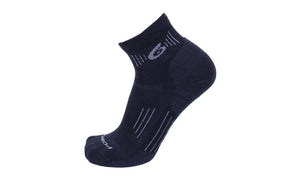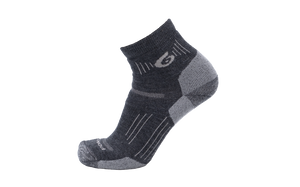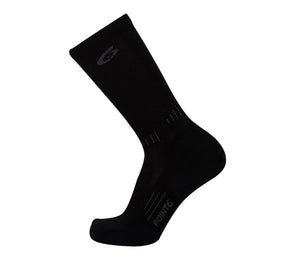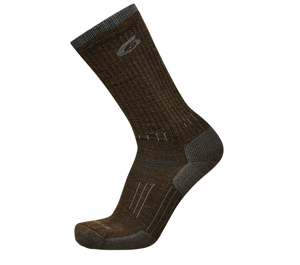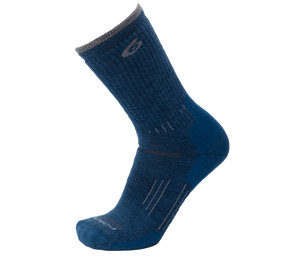
By: Liz Cunningham
For those that have never been on a backcountry ski trip to a hut or chalet, it's one of those few experiences where you disconnect and explore the natural world steps away from where you wake up. There are many types of backcountry lodging options across North America and the World, some that are ski in/ski out; and others that require helicopter access. If you’re one of the lucky ones to lock down a spot at one of these coveted locations, then get ready to pack your bags!
Whether you’re snowshoeing, skiing, or accessing a hut by helicopter, you’ll want to pack light and bring only the things you really need. Some huts have a private chef, others come partially stocked with essentials, and others you’ll need to pack in all your food.
Running water is becoming more common by tapping into remote mountain streams with natural filtration systems but it would be advisable to make sure you know what your access to water is before you go. And in most cases, assume that you’re doing #2 in an outhouse of some sort.
Most private chalets will provide bedding but it’s also common to have to bring your own sleeping bag.
Putting together your packing list is not rocket science, but like packing for most trips, it’s easy to overpack. Of course, any hut trip packing list is dependent on the hut, how it’s accessed and whether you’re on a catered or non-catered trip. For sake of simplicity, the list below is clothing/gear only for a 4-7 day helicopter access ski trip excluding food and bedding. That leaves us with gear and clothing for the week. When flying into a hut, you wear ALL your ski gear including helmet and goggles. The amount of snow the heli kicks up when landing and taking off is worth having those goggles accessible! You are also only allowed to bring your ski pack that will hold all your avalanche safety gear, and then one small duffle, usually between 30-40L max.
Before getting into the full packing list recommendations, it's important to note that Point6 provides the ultimate head to toe foundation of your gear. The new Livin'It Collection truly is the most comfortable and amazing hut hanging, aprés sippin', and post ski loungewear that exists. Below, are 5 essential items you can't forget on your next hut trip!
- Merino base layer- the MOST important layer to keep your temperature regulated as you transition between going up and skiing down.
- Socks that provide just enough cushion for all day comfort.
- Lightweight uphill gloves- your hands will get sweaty!
- Performance Beanie - keeping that noggin warm in all weather conditions.
- Merino Hoodie and Jogger- the ultimate “backcountry cozy” attire.

General Hut Trip Packing List
Bags:
- Ski Pack – 1x – 30-40 liters - the Patagonia Descensionist Backcountry Pack is a great option. All ski related gear should go in here:
- shovel, probe, skins, beacon, camera, gloves, puffy jacket, thermos, goggles, hat, etc.
- Duffel Bag –1x – 30-40 liters – holds everything else that does not go in your ski pack or that you’re wearing.
What to Wear:
- Socks – Of course we are recommending good socks! After much testing, my go-to for backcountry touring is the Pro Light OTC - it provides shin and heel cushion, just where you need it.
- Long Underwear Top & Bottom- arguably the most important layer and wool is a must! Point6 Midweight Base Layers are our choice here. Depending on the season, having a merino tee as your first layer might be a good choice.
- Ski Pants – For these I recommend lightweight fully waterproof pants or bibs.
- Boxer briefs / Underwear
- Warm Insulated Jacket – If the weather is really cold, this is nice to have for the top while transitioning, or for longer breaks. I’d recommend Himali’s Altitude Down Parka.
- Lightweight Insulated Jacket – Synthetic or Down jacket that can serve as a midlayer as well. The Ventrix series from the North Face is a great insulating, lightweight, and breathable layer that if it gets really cold, you’d be able to comfortably wear while skinning. Other options include the Arc’teryx Proton LT or Patagonia Nano-Air
- Outer Shell Jacket – lightweight waterproof, breathable shell with hood
- Windbreaker/LW breathable shell - This became my most used piece of clothing on a recent hut trip. If temps remained above freezing, I would pair this jacket with the Point6 base layer crew and it would stay on all day. Throw the puffy over at the top then my shell, and ready to shred down! If below freezing, see above for a LW Insulated Jacket recommendation.
- 2 Pair Gloves – A warm pair for cold days and backup use. A light pair for uphill wear - Point6 Base Glove
- 2 Wool Hats – 2x wool hats - Point6 Performance Beanie for skinning up, and one in case you need more warmth waiting around, or snacking.
- Helmet
- Goggles
- Ball Cap – ball cap for sun protection
- Buff –Point6 Double Layer Gaitor
Hut Clothes and Gear:
- Cozy pants – Livin’it Merino Joggers
- T-shirt –100% Merino Tee
- Hoodie -Livin’it Merino Hoodie
- Socks – 1x – One cozy pair for wearing in the hut -Medium Cushion Crews are my recommendation! Plus extra pair for multiple days of skiing.
- Hut shoes – slippers or slip ons
- Book – though most huts have a library
- Personal Stuff – toothbrush, comb, toothpaste, travel-size shampoo, razor, travel-shave cream
- Towel
Ski Gear:
- Boots – Wear on flight in/out
- Skis (or Splitboard) –1 Pair – Make a heli-bundle with poles using voile straps for flying
- Poles – adjustable poles
- Voile Straps – 3-4x straps
- Climbing skins – 1 pair
- Avalanche Beacon – Use fresh batteries
- Shovel
- Probe
Miscellaneous Gear:
- Headlamp
- Water Bottle -I like the collapsible or platypus bottles because they take up less room
- Thermos –optional
- Sunscreen, Lip Balm
- Sunglasses
- First Aid Supplies –Athletic tape, second skin/blister relief, Advil, a few band aids, cold medication
- Repair Kit – Most huts have a bench and tool area, so keep it basic. A few binding-specific screws, a multi-tool, some duct tape, skin wax, ski scraper
Optional Gear:
- Camera
- GPS
- Two-way radio –Some huts provide radios for guests
- Book or Kindle – Huts often have a small library of books as well.


